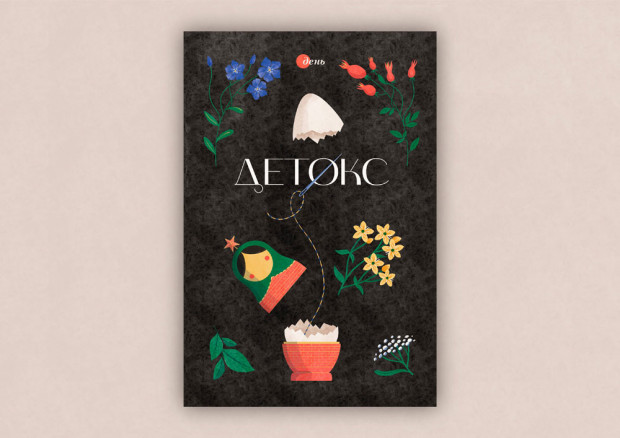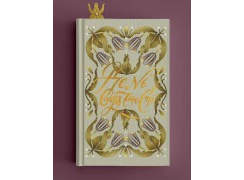Actors and warriors
Exhibition of 36 ukiyo-e prints from the Japanese collection of the Khanenko Museum has opened in Kyiv
The Bohdan and Varvara Khanenko Museum of Arts has presented a refined esthetic gift to all lovers of the Oriental art as it has launched an exhibition of world famous prints created by the Utagawa school.
“Color woodcut art, which we call ukiyo-e, is an exceptional phenomenon in Japanese art,” head of the museum’s Oriental division Halyna Bilenko told us. “The museum houses a collection of 230 sheets of ukiyo-e. We know from archival sources that Bohdan Khanenko purchased these prints at an auction at Drouot Hotel in Paris in 1912. Today, we show 36 sheets at the Japanese Hall. These are works of famous artists depicting kabuki actors, the beautiful geishas, heroes, and landscapes.”
The ukiyo-e artist inked the prototype of the print on thin paper, the block-cutter then glued the picture face first on the block and cut away blank spaces. The resulting image was the first print form, a few black-and-white prints were made based on it, with intended colors indicated. Plant or mineral paints were applied to the form which was then imposed on wet rice paper and printed as engraving.
Interestingly, images were produced in black and white first, but later pictures were painted by hand with a brush, and 18th century masters began to use color printing equipment to produce so-called “brocade pictures.”
Researchers believe that ukiyo-e owes its popularity to Utagawa Kunisada (1786-1864), and the museum’s collection holds more than 100 of his works. The master’s career lasted for almost 56 years, and 20,000 to 40,000 prints of his engravings are extant.
The exhibition includes a sheet from the series “100 Poems by 100 Poets,” published in 1848 as a new edition of the poetry anthology created by Fujiwara no Teika, a 13th century literary critic. Each verse on it belongs to one of the 100 poets who lived from the 7th to the 13th century. The series “53 Parallels for the Tokaido” and “Intermediate Stations of the Tokaido Road” depict actors against the background of landscapes familiar to every Japanese person. These series were created by Utagawa Hiroshige (1797-1858). The audience can see performer of female roles Iwai Hanshiro VII, popular performer of young lover roles Ichikawa Danjuro VII, performer of male and female roles Ichikawa Danjuro VI, Sawamura Tanosuke who posthumously received the title of “the double best, brilliant actor,” and other celebrities of the Japanese theater.
The series “36 Views of Mount Fuji” (1834) and “53 Stations of the Tokaido Road” (1833) belong to the hand of master Hiroshige. The career of this artist was unusual, as he was born into a samurai family, but believed in his talent so strongly that decided to go to the Utagawa ukiyo-e school. His prints “36 Views of Mount Fuji,” published in 1831 and repeating the theme of famous Hokusai’s sheets, was so successful that Hiroshige republished it a few times. The exhibition also shows the master’s sorrowful engraving The Kisokaido Road, which was created at a time when his wife died, and sad Hiroshige went on a long journey.
The works Utagawa Kuniyoshi (1797-1861) tell stories of the past. Print Yositsune’s Troops Attack the Heike Clan’s Units at the Foot of the Ichinotani Mountains depicts the battle that took place in 1181. Samurai swords, daggers and a wonderful collection of tsubas present an interesting supplement to the ukiyo-e which is exhibited side by side with it. Thus, the Japanese Hall displays items that are similar to military weapons depicted on sheets of ukiyo-e.
The prints of Master Kitagawa Utamaro (1754-1806) will be an excellent gift for lovers of the Japanese color woodcut art. “He worked in the genre okubo-e, or large heads,” Bilenko clarified. “The idea to create portraits of famously beautiful geishas originated with his friend, publisher Tsutaya Juzaburo. We see here series “The Meeting of the Ruling Beauties” and “Glorious Beauties of the Best Six Houses,” which were created at a high point of Kitagawa’s creative development. Next to them, we placed two sheets Takashima Ohisa and Lovers under a Mosquito Net. We know that works in the bijin-ga genre were in great demand, published by the Juzaburo house as well as Omiya Gonkuro and Wakasaya Yoichi. The splendor and elegance of ukiyo-e prints are revealed to us in wonderful works by artists Torii Kiyonaga, Kubo Shunman, Katsukawa Shunsho, Utagawa Toyohiro (1773-1828), Totoya HOKKEI, and Kitagawa Tsukimaro.”






